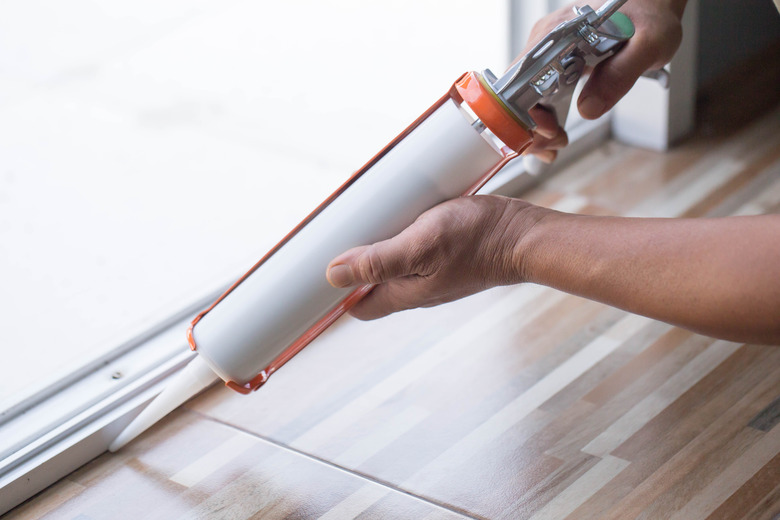How To Make Caulk Cure Faster
We may receive a commission on purchases made from links.
A thin strip of caulk does quite a lot. The line of caulking that rims a bathtub, a sink or other wet areas keeps moisture from seeping into places where it can cause damage or mold issues. But it can only do its job well when it's applied correctly and allowed to cure sufficiently.
Applying Caulk Correctly
Applying Caulk Correctly
Aside from a good drying time to ensure it cures well, caulk needs to be applied in just the right way. If it's slathered on or applied too heavily, then it can take twice as long to cure. A thick or messy line of caulk may possibly not get truly dry so it can set properly. A thin line may cure faster, but it certainly won't do the job. Caulk that isn't cured properly will quickly curl up and peel away from the tile or wall or will simply wash away.
Cut the seal under the nozzle cap at an angle with a sharp blade so the applicator tip is as slim as possible. When applying the caulk, the tip is important in controlling the line, or bead. A narrow tip will create a small line while cutting the nozzle farther down the point will result in a wider bead of caulk. Always cut the nozzle at a 45-degree angle for a smoother bead.
Apply the caulk at a 45-degree angle to the joint or side of the sink. Use consistent pressure as you run the bead as far as you can in a continuous flow. Use a caulk finishing tool to smooth over the bead, or run your finger to push the caulk into the seam and smooth the finish. Wipe away any excess with the edge of a clean, damp towel.
Dry Time vs. Cure Time
Dry Time vs. Cure Time
Caulk can feel dry to the touch relatively quickly. That doesn't mean the bead is ready for action. It depends on the type of caulk. Always read the manufacturer's directions for cure time, including the fine print. Some caulks, such as polyurethane, which is used on outdoor installations and windows, can take up to 10 days to cure.
Silicone caulk that is labeled with a one-hour dry time may actually take more time. Humidity and temperature can contribute to drying times. The more humid the conditions in the room or the higher the temperatures, the more time the caulk may need to dry. The best temperatures for caulk to dry are between 40 and 80 degrees Fahrenheit. Allow the caulk to cure for 24 hours to be on the safe side, or at least for a minimum of three hours after application.
Speed Up the Drying Process
Speed Up the Drying Process
It can be tempting to use heat to speed up the drying process, but using a blow dryer to set the caulking can cause it to melt and lose its grip. Choice of method for speeding up drying depends on the caulk. Acrylic latex, for example, dries as water from the wet material evaporates. A fan placed in the room, not directly on the caulk, can move things along. Silicone, however, needs moisture to cure and can be helped along by adding a humidifier to the room.
